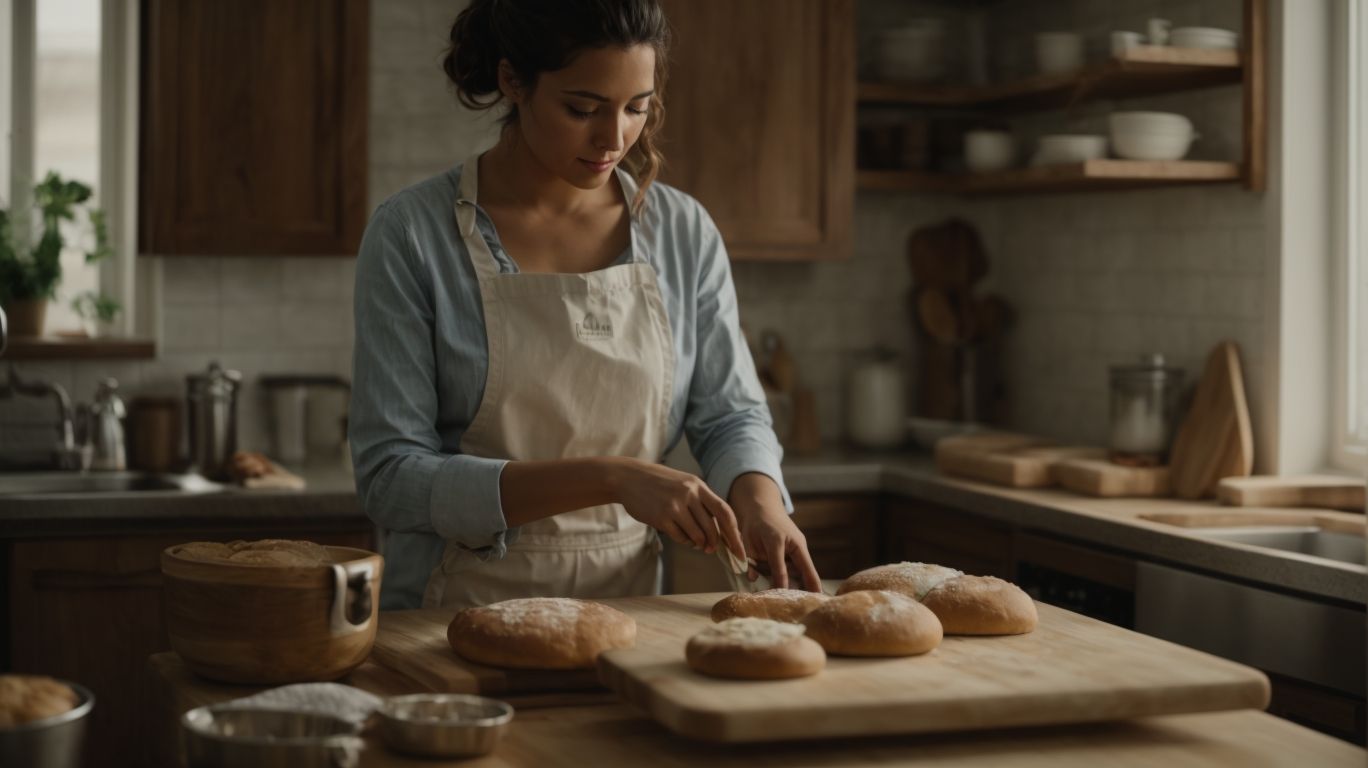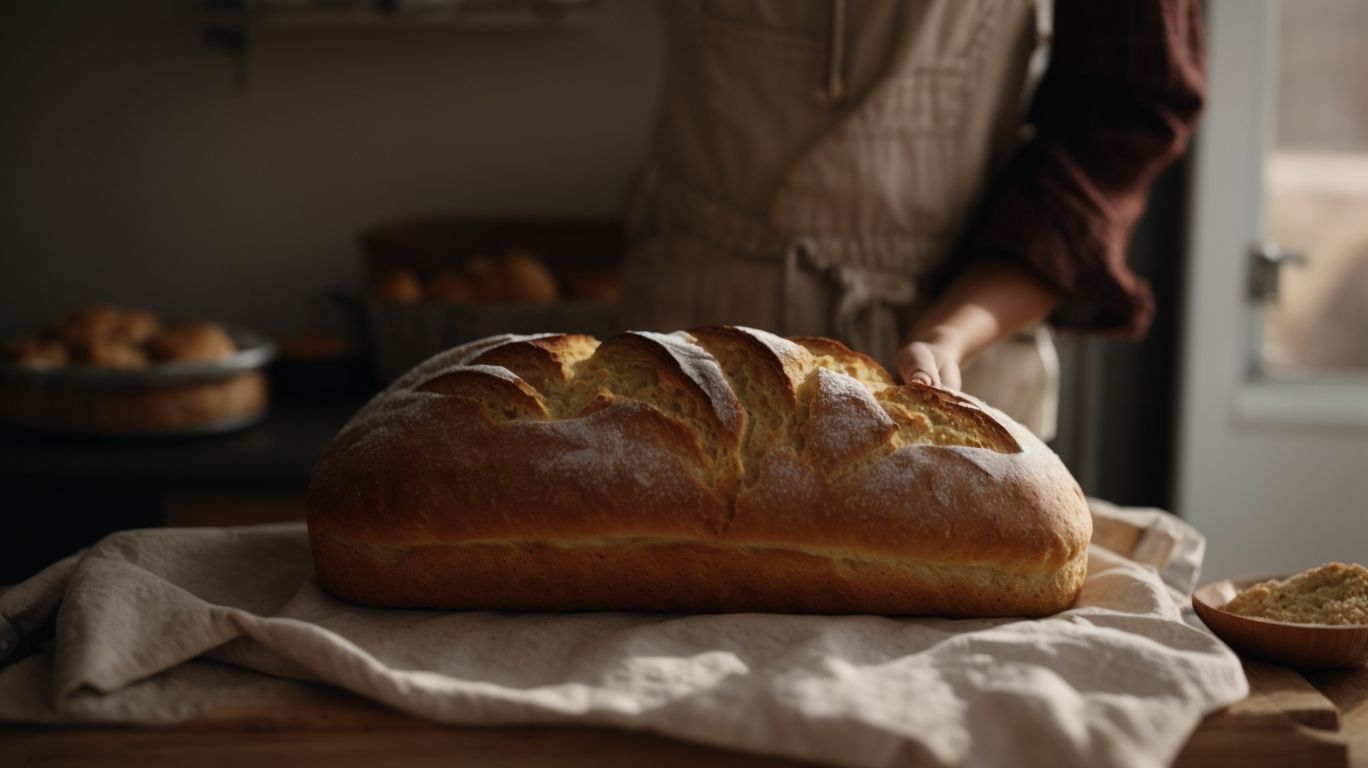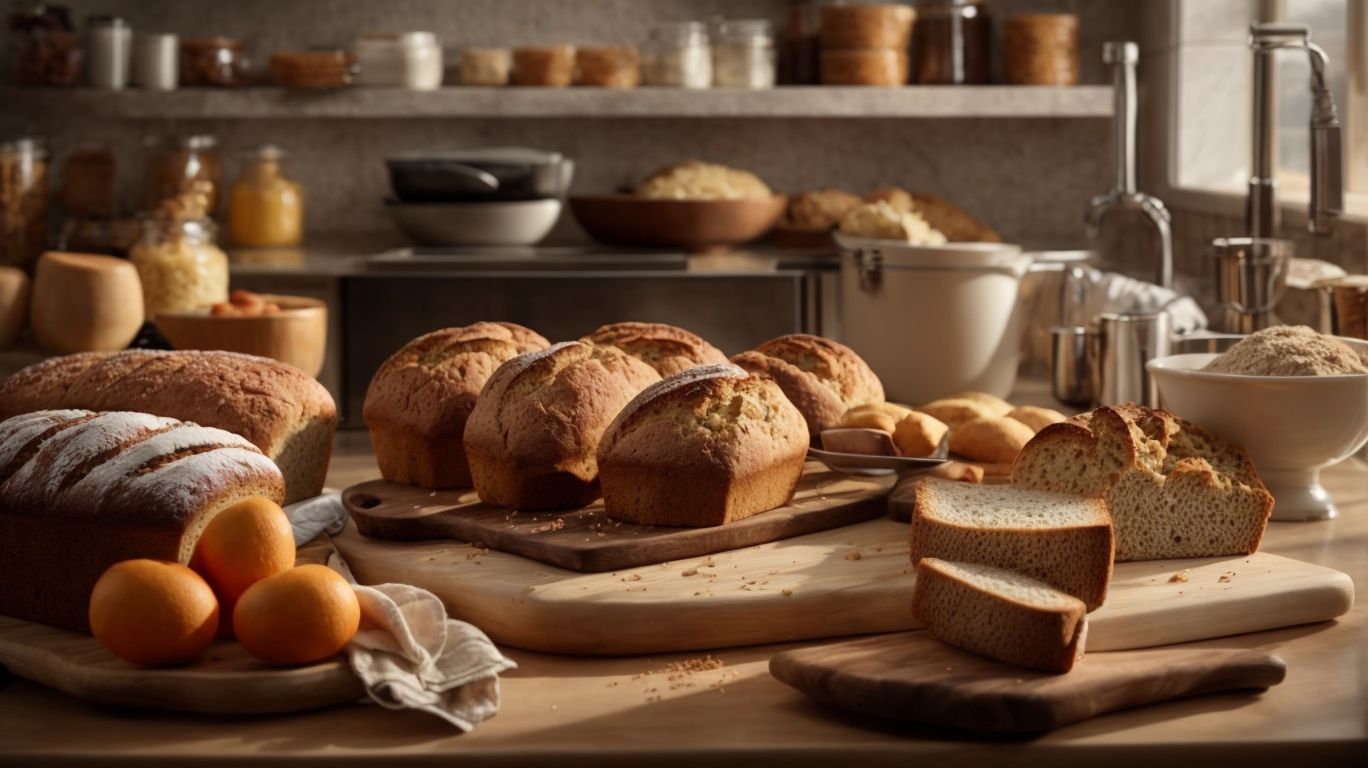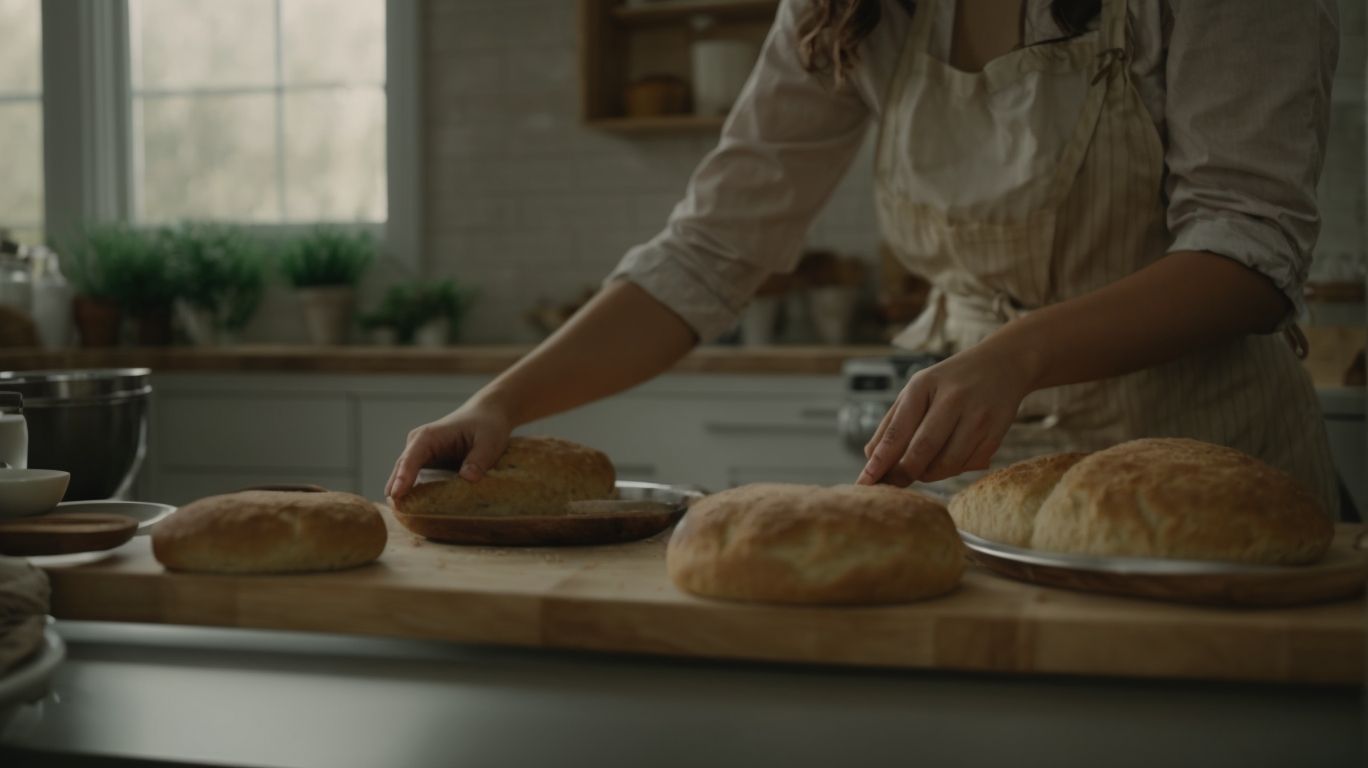How to Bake Gluten Free Bread?
Are you curious about gluten and why some people avoid it?
Do you want to know more about Celiac Disease and gluten intolerance symptoms?
Are you looking for tips on how to make delicious gluten-free bread at home?
In this comprehensive article, we will explore everything you need to know about gluten, how to bake gluten-free bread, tips for achieving the perfect texture, how to make it rise, and even provide you with some mouthwatering gluten-free bread recipes.
Let’s get started!
Key Takeaways:
What is Gluten and Why Do People Avoid It?

Credits: Poormet.Com – Nicholas Wilson
Gluten, a protein found in wheat, barley, and rye, is a common ingredient in many foods. People avoid gluten due to various reasons, including celiac disease and gluten intolerance.
For individuals with celiac disease, consuming gluten triggers an immune response that damages the small intestine. This can lead to malabsorption of nutrients, digestive issues, and other serious health complications. On the other hand, those with gluten intolerance experience symptoms like bloating, abdominal pain, and fatigue after consuming gluten-containing foods.
Given the prevalence of gluten in so many products, managing a gluten-free diet can be challenging. It has become increasingly popular due to the rise in awareness of gluten-related health conditions. The impact of gluten on certain individuals cannot be understated, as it plays a significant role in their overall well-being.
What Is Celiac Disease?
Celiac Disease is an autoimmune disorder that affects the small intestine, triggered by the ingestion of gluten-containing foods. It can lead to digestive issues, nutrient malabsorption, and other health complications.
When a person with Celiac Disease consumes gluten, their immune system launches an attack on the lining of the small intestine, leading to inflammation and damage to the villi, which are tiny finger-like projections responsible for nutrient absorption.
Common symptoms of celiac disease include diarrhea, bloating, weight loss, fatigue, and anemia due to the body’s inability to absorb essential vitamins and minerals. Individuals may experience skin rashes, joint pain, and neurological symptoms such as headaches and depression.
What Are the Symptoms of Gluten Intolerance?
Gluten intolerance, also known as non-celiac gluten sensitivity, can manifest with symptoms such as bloating, stomach pain, fatigue, and headaches after consuming gluten-containing foods.
Unlike celiac disease, which is an autoimmune disorder triggered by gluten consumption, gluten intolerance refers to a condition in which individuals experience digestive discomfort without the severe intestinal damage seen in celiac patients. Common symptoms of gluten sensitivity can also include joint pain, skin rashes, and brain fog, disrupting daily activities and quality of life.
Many people with gluten sensitivity find relief by adopting a gluten-free diet, which entails avoiding wheat, barley, and rye. Diagnosis can be challenging due to the absence of specific tests, often requiring an elimination diet to identify triggers and manage symptoms effectively.
How to Make Gluten Free Bread?

Credits: Poormet.Com – Daniel Gonzalez
Making gluten-free bread involves using alternative ingredients like gluten-free flour, psyllium husk, and yeast to create a dough that can be baked in the oven. This homemade bread recipe is perfect for those following a dairy-free diet.
Gluten-free flour, such as rice flour, almond flour, or chickpea flour, is a staple in creating a gluten-free bread recipe. Psyllium husk acts as a binding agent, mimicking the elasticity of gluten in traditional bread. Yeast helps the dough rise, giving the bread a light and airy texture.
- To start, combine the gluten-free flour, psyllium husk, yeast, salt, and any other desired ingredients in a mixing bowl. Mix well to ensure even distribution of the ingredients.
- Add warm water or dairy-free milk gradually to the dry ingredients, stirring continuously until a sticky dough forms. Let the dough sit for a while to allow the psyllium husk to absorb the liquids.
What Ingredients are Needed?
To make gluten-free bread, you will need gluten-free flour, yeast, psyllium husk, water, and other essential ingredients to achieve the desired texture and taste.
Gluten-free flour serves as the base of the bread, providing the structure and volume typically supplied by gluten-containing flours. Yeast acts as the leavening agent, helping the dough rise and creating a light and airy texture. Psyllium husk is a common binder used in gluten-free baking, enhancing the elasticity of the dough and preventing it from becoming crumbly.
The role of water is crucial in activating the yeast and hydrating the flour to form a workable dough. Additional ingredients such as olive oil, honey, salt, and eggs can enhance flavor, moisture, and richness in the final product.
What Are the Steps to Make Gluten Free Bread?
The process of making gluten-free bread involves preparing the dough, allowing it to rise, shaping it, and baking it in the oven to achieve a delicious homemade loaf.
To begin the process, gather your gluten-free flour blend, active dry yeast, warm water, sugar, xanthan gum, salt, and oil. Remember to use gluten-free ingredients to ensure the bread remains safe for those with gluten sensitivities.
Kneading the dough is a crucial step in developing its structure and texture, so make sure to knead it until it reaches the desired elasticity. Let the dough rise in a warm, draft-free place until it doubles in size. Next, gently shape the risen dough into a loaf and place it in a greased pan for its final rise before baking to golden perfection.
Tips for Baking Gluten Free Bread
Achieving the right texture in gluten-free bread can be challenging, but with the right techniques and ingredients, you can create a delicious loaf. Avoiding common mistakes and ensuring proper rise are crucial for successful gluten-free baking.
One key tip for enhancing the texture of gluten-free bread is to use a combination of gluten-free flours like almond flour, rice flour, and tapioca flour. These alternative flours can mimic the structure that gluten provides, leading to a better crumb and overall mouthfeel.
In terms of getting that perfect rise in gluten-free bread, incorporating xanthan gum or guar gum can help improve the elasticity and structure of the dough. These binding agents work to trap air bubbles, aiding in the leavening process for a lighter and fluffier loaf.
How to Achieve the Right Texture?
Achieving the right texture in gluten-free bread involves using ingredients like psyllium husk, proper hydration, and precise baking techniques to create a soft and moist crumb.
Psyllium husk acts as a binding agent in gluten-free bread, helping to mimic the elasticity that gluten provides in traditional bread.
In terms of hydration levels, it is essential to strike the right balance; too much liquid can result in a gummy texture, whereas too little may lead to a dry and crumbly consistency.
The baking method plays a crucial role in achieving the desired texture. Techniques such as steam baking can help retain moisture and develop a crust that complements the soft crumb.
What Are Some Common Mistakes to Avoid?
Common mistakes in gluten-free bread baking include using too much flour, overmixing the dough, and not allowing sufficient rise time, leading to dense and dry loaves.
When baking gluten-free bread, it is crucial to pay attention to the ingredients and their ratios. Using a mix of gluten-free flours can often yield a better texture than relying solely on one type. Incorporating xanthan gum or psyllium husk can help bind the ingredients together, preventing the bread from becoming crumbly.
Another common pitfall is not hydrating the dough adequately. Gluten-free flours have different absorption rates, so adjusting the liquid content accordingly is vital. Remember to let the dough rest and hydrate fully before baking to achieve the desired softness.
How to Make Gluten Free Bread Rise?
Ensuring proper rise in gluten-free bread can be achieved by using leavening agents like yeast or baking powder, and exploring alternative techniques such as pre-fermentation or steam baking for improved texture and volume.
When opting for yeast as the leavening agent in your gluten-free bread, it’s crucial to ensure you’re using a yeast strain suitable for gluten-free flours to achieve the desired rise. Baking powder, on the other hand, acts as a chemical leavening agent that releases carbon dioxide gas when mixed with wet ingredients, aiding in the expansion of the dough.
Experimenting with pre-fermentation techniques, like creating a gluten-free sourdough starter, can enhance flavor and improve the structure of the bread while promoting a more robust rise. Steam baking involves introducing steam into the oven during the initial stages of baking to create a humid environment that encourages oven spring and boosts volume.
What Leavening Agents Can Be Used?
Leavening agents like yeast and baking powder are commonly used in gluten-free bread recipes to help the dough rise and achieve a light and airy texture.
Yeast is a living microorganism that plays a vital role in gluten-free bread making. When activated in a warm liquid, yeast consumes sugars and produces carbon dioxide gas, which gets trapped in the dough, causing it to expand and rise.
On the other hand, baking powder is a chemical leavening agent that reacts with moisture and acidic ingredients in the dough to create carbon dioxide bubbles, contributing to the desired lightness and volume in the final bread product.
What Are Some Alternative Techniques for Rising?
Along with traditional rising methods, alternative techniques like pre-fermentation or steam baking can be employed to enhance the rise and texture of gluten-free bread, offering unique flavor profiles and improved structure.
Pre-fermentation, also known as sourdough starter, involves a longer fermentation process, resulting in a more complex and flavorful bread. This method allows for a natural breakdown of gluten, making it easier to digest for those with sensitivities.
On the other hand, steam baking introduces moisture during the initial baking stage, facilitating crust formation and enabling the bread to rise more evenly. The steam helps the loaf expand without drying out, creating a soft crumb and enhancing the overall texture.
Gluten Free Bread Recipes

Credits: Poormet.Com – Vincent Carter
Explore a variety of gluten-free bread recipes, including classic white bread, whole grain options, flavorful banana bread, and sweet cinnamon raisin loaves, each offering a delicious and easy-to-follow option.
For those who enjoy a traditional slice of bread, the classic white gluten-free recipe combines gluten-free flour, xanthan gum, yeast, salt, sugar, and water to form a soft and fluffy loaf. Following precise measurements and allowing it to rise properly are crucial steps in achieving the perfect texture.
Alternatively, opt for the heartier whole grain variation, packed with nutritious ingredients like brown rice flour, quinoa flakes, flaxseeds, and honey. This recipe not only provides a wholesome taste but also a healthy punch of fiber and protein.
Classic White Bread
Classic White Bread is a staple gluten-free recipe that delivers a soft and fluffy loaf perfect for sandwiches or toasting. With simple ingredients and easy instructions, this bread is a versatile option for everyday baking.
To make this delightful loaf, you will need gluten-free flour blend, xanthan gum, yeast, sugar, salt, egg whites, olive oil, and warm water.
Start by combining the dry ingredients in a bowl, then add the wet ingredients. Knead the dough until smooth, cover with a damp cloth, and let it rise until doubled in size.
After rising, shape the dough into a loaf and place it in a greased pan for the second rise. Preheat your oven, bake until golden brown and the internal temperature reaches about 200°F.
Whole Grain Bread
Whole Grain Bread offers a nutritious and fiber-rich alternative in the realm of gluten-free baking. Packed with wholesome ingredients, this bread is a hearty and satisfying choice for health-conscious individuals.
In terms of baking a delectable loaf of gluten-free whole grain bread, choosing the right blend of whole grain flours is key. A combination of quinoa, brown rice, and sorghum flour can create a robust texture and rich flavor profile. These whole grains not only impart a nutty taste but also provide essential vitamins, minerals, and antioxidants that contribute to overall well-being. The fiber content in whole grains helps regulate digestion and promote a feeling of fullness, making this bread a wholesome addition to any meal.
Banana Bread
Banana Bread is a delightful gluten-free treat that combines the natural sweetness of ripe bananas with warm spices for a comforting dessert or snack option. This moist and flavorful bread is a must-try for any baking enthusiast.
One of the secrets to creating the perfect gluten-free banana bread lies in using ripe bananas. Ripe bananas not only offer a natural sweetness but also provide a soft and moist texture to the bread.
To enhance the rich flavors, aromatic spices like cinnamon, nutmeg, and a hint of vanilla extract are added to the batter. These spices not only tantalize the taste buds but also infuse the bread with a warm and comforting aroma.
In terms of baking techniques, it’s crucial to mix the ingredients gently to avoid overmixing, which can result in a dense loaf. Using a combination of gluten-free flour blends, such as almond flour or coconut flour, can help achieve that perfect balance of moisture and fluffiness in the banana bread.
Cinnamon Raisin Bread
Cinnamon Raisin Bread is a scrumptious gluten-free option that marries the warmth of cinnamon with the sweetness of plump raisins in a soft and aromatic loaf. Enjoy this comforting bread for breakfast or as a delightful snack.
When you take a bite of this heavenly bread, your tastebuds will be greeted by the rich flavors of cinnamon and the burst of sweetness from the juicy raisins scattered throughout the tender crumb. The aroma that fills your kitchen as this bread bakes is simply irresistible, making it a perfect treat for family gatherings or a cozy afternoon indulgence.

